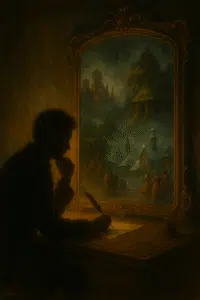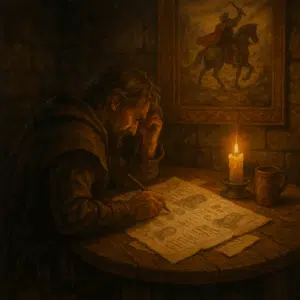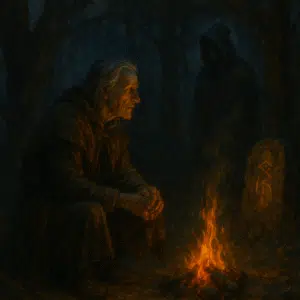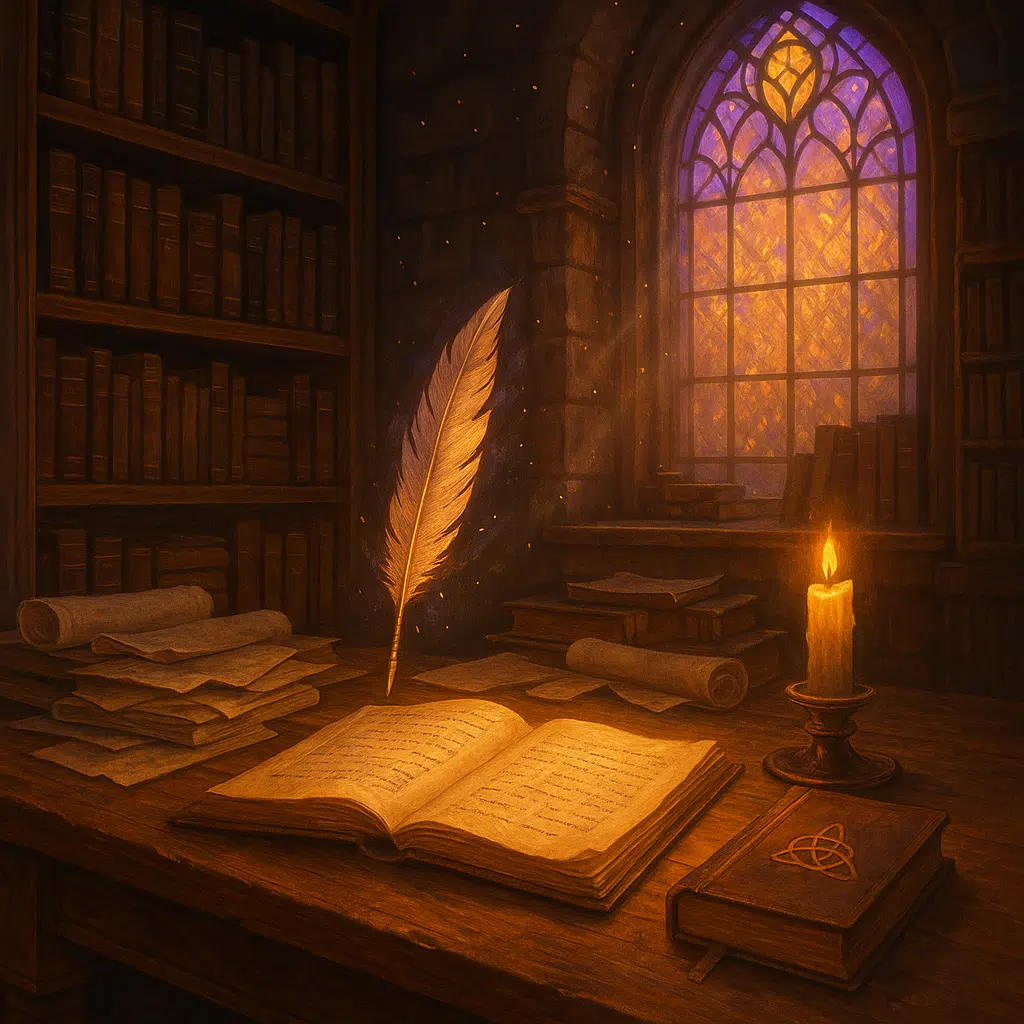Estimated Reading Time: 42 minutes (7919 words)
The well-worn paths of medieval fantasy have been traveled so thoroughly that their stones bear the impressions of countless fictional footsteps. Dragons circle ancient towers, knights quest for mystical artifacts, and dark lords scheme from forbidden realms—familiar comforts in a genre that paradoxically promises unlimited imagination.
Yet beyond these comfortable boundaries lies the true power of fantasy worldbuilding—vast territories of untapped potential where cultures breathe with unfamiliar rhythms and magic obeys laws we’ve never considered. Here, fantasy doesn’t simply recycle what came before; it challenges our perspectives, expands our emotional vocabulary, and offers genuine discovery.
The great irony is that many writers limit themselves to reimagining Tolkien’s Middle-earth when they could be conjuring worlds as foreign to our experience as Middle-earth was to readers encountering it for the first time. Imagine fantasy shaped by the oral traditions of West Africa, where magic flows through spoken words rather than arcane gestures. Consider civilizations built around the seasonal migrations of mysterious creatures, or societies where time flows differently depending on one’s proximity to ancient power sources.
These alternatives aren’t merely cosmetic changes to familiar templates—they represent fundamentally different approaches to fantasy that can revitalize the genre and capture readers fatigued by the expected. The most compelling new worlds aren’t built by swapping castles for different architectural styles, but by reimagining the very foundations upon which fantasy worlds rest.
- Beyond dragons and medieval castles lies a universe of untapped fantasy potential waiting to be explored. Writers often get trapped in familiar Tolkien-inspired settings when the genre offers boundless possibilities for fresh, captivating worlds that readers haven’t experienced before.
- Mine cultural traditions beyond medieval Europe: Draw inspiration from the rich mythologies of Africa, pre-colonial Americas, Southeast Asia, and other underrepresented regions to create fantasy worlds with distinctive social structures, architecture, and belief systems.
- Reimagine your relationship with time: Break free from the quasi-medieval period by setting your fantasy in prehistoric eras, enlightenment-equivalent periods, or industrial revolutions with magical twists that fundamentally transform how societies develop.
- Craft magic systems with meaningful constraints: The most compelling fantasy worlds feature magic with clear limitations and consequences—develop systems where power comes at a cost, requires rare resources, or creates environmental impacts that shape your world.
- Subvert fantasy creature expectations: Rather than defaulting to elves and dwarves, create entirely new sentient species with unique biology, culture, and perspectives that challenge readers to reconsider what it means to be intelligent life.
- Build worlds through sensory experiences: Develop environments that engage all five senses—from the scent of unfamiliar spices to the texture of alien vegetation—creating immersive settings that readers can almost physically feel.
- Design societies shaped by their environments: Let your world’s geography, climate, and natural resources fundamentally influence how civilizations develop, from architecture adapted to extreme conditions to political systems designed around resource scarcity.
- Let worldbuilding inform character development: Your fantasy setting isn’t just backdrop—it should actively shape your characters’ perspectives, prejudices, ambitions, and limitations in ways that drive authentic conflict.
Fantasy worldbuilding extends far beyond simply swapping medieval castles for different structures. The techniques above will help you craft truly distinctive settings that challenge genre conventions while still delivering the wonder and immersion readers crave from fantasy fiction.
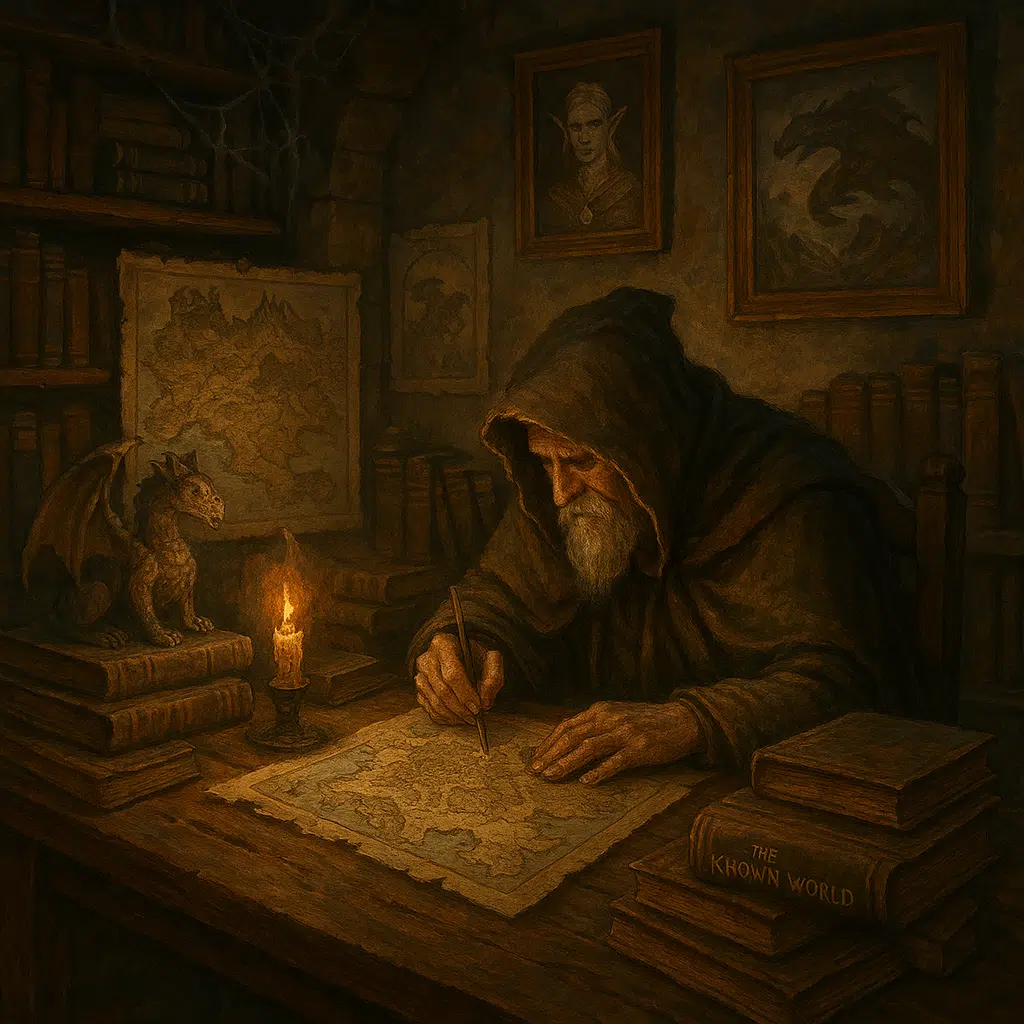
The Comfort Trap of Medieval Fantasy
The Tolkien Shadow in Modern Worldbuilding
The long shadow of Middle-earth stretches across decades of fantasy literature, casting familiar silhouettes of dark towers, ancient forests, and creatures both fell and fair. J.R.R. Tolkien’s masterwork didn’t merely influence fantasy—it fundamentally shaped our collective imagination of what fantasy should be. Writers venturing into worldbuilding often unconsciously adopt his medieval European aesthetic, complete with kingdoms, castles, and rigid hierarchies that mirror England’s feudal past. This phenomenon runs deeper than mere imitation; it has become a template so ingrained that deviations feel almost transgressive.
This powerful gravitational pull creates what might be called “default fantasy”—a setting where readers immediately recognize the signposts: taverns serving hearty ale, forests hiding elven kingdoms, underground realms of crafting dwarves, and humans occupying the middle position of a cosmic hierarchy. The landscape itself follows predictable patterns: temperate forests in the west, perhaps a desert to the south, frozen wastelands to the north, and a corrupted eastern region from which threats emerge. Even the maps, with their carefully inked mountains and forests, follow conventions established in Tolkien’s original endpapers.
The problem isn’t that these elements lack merit—Tolkien’s brilliance ensured they resonate deeply—but that they’ve become a substitute for the imaginative heavy lifting fantasy requires. When writers automatically place their stories in quasi-European settings with familiar magical creatures, they miss opportunities to create genuinely transformative experiences for their readers.
Why Writers Retreat to the Familiar
The allure of established fantasy tropes extends beyond simple imitation. For many writers, these familiar elements serve as shorthand—instantly communicating complex ideas without extensive exposition. A mention of elves immediately conjures images of grace, longevity, and connection to nature. Dwarves suggest craftsmanship, stubbornness, and underground riches. This shorthand allows writers to build on foundations readers already understand.
More significantly, these comfortable tropes represent safety in a commercial landscape where deviation means risk. Publishers, sensing reader expectations, often push writers toward recognizable territory. The market rewards familiarity, creating a self-reinforcing cycle where medieval European fantasy becomes the default simply because it already dominates shelf space.
Writers also retreat to the familiar because worldbuilding demands extraordinary mental energy. Creating truly original fantasy requires questioning fundamental assumptions about how societies function, how magic might operate under different natural laws, and how intelligent beings unlike ourselves might perceive reality. This cognitive burden tempts many writers to focus their creative energy on character and plot while allowing worldbuilding to default to established patterns.
The emotional dimension cannot be overlooked. Many writers first fell in love with fantasy through these traditional frameworks. The rolling hills of the Shire, the golden halls of Meduseld, the white walls of Minas Tirith—these settings evoke powerful nostalgia. Recreating similar worlds becomes an act of homage to cherished reading experiences, a way of extending beloved traditions rather than challenging them.
Mythic Traditions Beyond the Western Canon
Weaving African Cosmologies into Fantasy Frameworks
The rich tapestry of African mythological traditions offers fertile ground for fantasy worldbuilding, yet remains vastly underutilized. Unlike the hierarchical pantheons of European mythology, many African cosmologies present reality as an interconnected web where ancestors, spirits, and living beings exist in continuous relationship. The Yoruba concept of àṣẹ—a vital force flowing through all things—provides an alternative foundation for magic systems where power doesn’t reside in spells or artifacts but in relationships and connections.
Consider how a fantasy world might function if built upon the Akan concept of sunsum (spirit) and okra (soul), where every natural object contains consciousness. Magic in such a world wouldn’t involve domination of natural forces but negotiation with them. Practitioners might spend years learning to communicate with the spirits residing in rivers, mountains, and storms, developing relationships that allow cooperative magic rather than extractive spellcasting.
The West African griot tradition offers another distinctive framework for fantasy. Rather than written grimoires passed among elite practitioners, magic could flow through oral tradition, with spells gaining or losing power based on how they’re spoken, their rhythmic qualities, or the genealogical knowledge embedded within them. A society built around such magic would value storytellers as its most powerful members, with political systems developing to control or support this oral power.
African mythologies often feature trickster deities who subvert established orders—figures like Anansi the spider or Eshu the messenger. Fantasy worlds incorporating these elements might feature morally complex cosmological systems where chaos and order aren’t opposed forces but necessary complements, challenging the good-versus-evil dichotomy that dominates Western fantasy traditions.
Pre-colonial American Mythscapes and Their Potential
The Americas before European contact contained civilizations with profoundly different conceptions of time, space, and humanity’s relationship to the cosmos. The Mesoamerican view of cyclical time, where history moves in great wheels rather than linear progression, offers fantasy writers an alternative temporal framework. Imagine a world where past, present, and future exist simultaneously in different phases, where characters might literally walk into historical moments or where prophecy becomes not prediction but recognition of patterns repeating across vast time cycles.
The Haudenosaunee (Iroquois) understanding of the world as balanced between sky and earth realms suggests magic systems based on maintaining cosmic equilibrium rather than individual power accumulation. Their Great Tree of Peace concept could inspire fantasy societies where political power grows from metaphysical roots binding communities together—leadership based not on conquest but on the ability to maintain harmony between competing forces.
Many indigenous American traditions feature complementary dualism rather than opposing forces—the recognition that seemingly contrary elements actually create balance together. Fantasy worlds built on this principle might feature magic systems where practitioners must embody seemingly contradictory aspects: creation and destruction, growth and decay, community and solitude. Power would come not from choosing sides but from learning to hold opposites in balance.
The Navajo concept of hózhǫ́—often translated as “walking in beauty” or living in harmony with all things—offers a distinctive ethical framework for fantasy worlds. Rather than quests to destroy evil, narratives might center on restoring balance to damaged relationships between people, spirits, and landscapes. Healing, rather than conquest, becomes the heroic journey.
Southeast Asian Spiritual Systems as Worldbuilding Foundations
Southeast Asian spiritual traditions offer particularly rich material for alternative fantasy frameworks. The animistic beliefs found throughout the region, where mountains, rivers, trees and objects possess spirits requiring respect and propitiation, create natural foundations for magic systems where power derives from relationship rather than dominance.
Balinese Hinduism, with its complex ritual calendar and emphasis on maintaining cosmic balance, suggests fantasy societies where magic must be performed collectively, with entire communities participating in ceremonies that maintain the world’s stability. Individual practitioners might specialize in particular aspects, but magical power would flow from coordinated ritual action rather than solitary wizards.
The Buddhist concept of dependent origination—where all phenomena arise from complex webs of causality—offers a framework for magic systems where spells create rippling consequences throughout reality. Practitioners would need deep understanding of these causal networks, with the most skilled magic users being those who can trace the subtle interconnections between seemingly unrelated events and beings.
Filipino mythology features layers of reality—Kaluwalhatian (heaven), Kasamaan (realm of the wicked), and others—existing alongside the mortal world, with beings regularly crossing between them. Fantasy built on these traditions might feature worlds with permeable boundaries, where different planes of existence bleed into each other during certain seasons or celestial alignments, creating societies that must constantly adapt to changing cosmic geography.
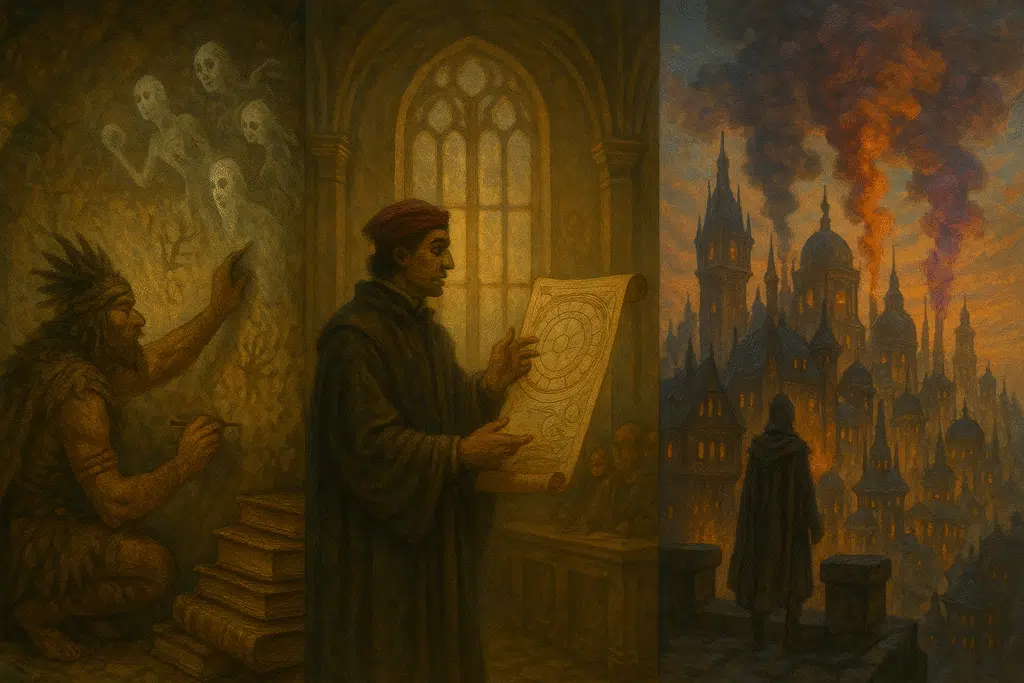
Breaking the Medieval Chronology
Fantasy in Prehistoric Settings
The prehistoric era offers vast, untapped potential for fantasy worldbuilding, liberating stories from medieval political structures while opening fascinating speculative doors. Imagine magic systems developed alongside the earliest human technologies—a world where cave paintings literally capture spirits, where domesticated fire contains elemental beings who must be negotiated with, or where the first musical instruments call entities from parallel dimensions.
A Neolithic fantasy might explore how early agricultural communities would develop differently with access to earth magic—perhaps communal rituals that ensure fertility become the foundation of magical practice, with seasonal ceremonies growing increasingly sophisticated as practitioners learn to channel energies flowing through ley lines beneath their settlements. Social structures would evolve around these practices, creating priesthoods and magical specializations unlike anything in traditional fantasy.
The nomadic-to-settled transition period offers particularly rich material. Imagine conflicts between nomadic clans who practice magic through movement—spells woven through migration patterns that follow magical currents across landscapes—clashing with settled peoples whose power comes from deep connection to specific locations. Neither approach would resemble conventional wizardry, yet both would create internally consistent magical systems with distinctive societal implications.
Prehistoric fantasy also allows exploration of human relationships with megafauna beyond the traditional dragon trope. What magical practices might develop around woolly mammoths, giant sloths, or terror birds? Perhaps magical bonds form between human clans and particular species, creating totemic relationships where magical power flows through these connections, shaping both human culture and evolutionary pathways of the bonded creatures.
Magical Enlightenment: When Knowledge Transforms Reality
The historical Enlightenment prioritized reason and empirical observation over tradition and faith. A magical parallel offers fascinating worldbuilding possibilities where systematic study of supernatural phenomena leads to radical societal transformation. Imagine fantasy societies experiencing their own magical enlightenment—where traditional folk practices suddenly undergo rigorous experimentation, classification, and technological application.
This setting creates natural tension between traditional practitioners who understand magic through inherited wisdom and innovative researchers developing theoretical frameworks that explain supernatural phenomena. Universities might become centers of magical innovation rather than cloistered sanctuaries preserving ancient knowledge. Public demonstrations of new magical principles could draw crowds like exhibitions of early electrical experiments did in our world.
The social implications run deep. As magical knowledge becomes systematized and widely distributed through newly invented printing presses, power structures built around controlled access to supernatural forces would face destabilization. Revolutionary movements might arise, demanding equal access to magical education. Philosophical debates would rage about whether magic is mere natural law or contains inherent moral dimensions that resist scientific reduction.
Technology would develop along fascinating alternative pathways. Rather than steam engines, perhaps magical engines powered by systematically harvested elemental energy drive an industrial revolution. Communication networks might utilize sympathetic bonds between specially prepared objects rather than electrical signals. Medicine might blend empirical observation with energy manipulation techniques verified through repeated experimentation.
Industrial Revolution with Arcane Catalysts
Fantasy rarely explores the collision between industrialization and magic, yet this intersection offers fertile ground for innovative worldbuilding. Imagine manufactories where enchanted assembly lines create mass-produced magical items, or mining operations extracting crystallized mana rather than coal from deep shafts. The aesthetic possibilities alone—brass and copper constructs channeling arcane energies, factories billowing multicolored magical exhausts—create distinctive visual landscapes far removed from medieval castles.
The socioeconomic implications prove even more compelling. What happens when magical talent becomes another resource to be commodified? Perhaps corporations employ enchanters in vast workshops where they cast the same spells repeatedly, their creative potential reduced to manufacturing efficiency. Labor movements might organize around magical workplace hazards—exposure to concentrated arcane energies or soul-draining enchantment processes.
Environmental consequences offer another rich vein. What ecological damage results from industrial-scale mana extraction? Perhaps magical pollution manifests as reality distortions, dimensional instabilities, or supernatural mutations affecting wildlife and marginalized communities. These issues create natural narrative conflicts that move beyond the traditional dark lord paradigm toward more complex antagonistic forces.
Technological development would follow distinctive paths. Rather than internal combustion engines, perhaps vehicles run on bound elemental spirits. Communication systems might use mass-produced scrying devices rather than telephones. Urban planning would accommodate magical infrastructure—ley line conduits alongside sewage systems, warding stations on street corners, or public enchantment facilities providing magical services to citizens regardless of innate talent.
The Architecture of Magical Limitations
Power with Consequence: Creating Balanced Systems
The most compelling magic systems aren’t defined by what they allow but by what they demand in return. Magic without significant limitations quickly becomes a narrative problem—undermining tension, flattening character development, and eliminating meaningful obstacles. The architecture of these limitations forms the foundation of believable magical worldbuilding.
Consider designing systems where every spell exacts a physical toll proportional to its effect. A healing charm might temporarily transfer the patient’s wounds to the caster, forcing practitioners to carefully gauge how much injury they can safely absorb. Weather manipulation might age the practitioner by days or weeks, creating societies where the most powerful weather mages appear ancient despite relatively few years of life.
Psychological costs create equally interesting systems. Perhaps magic requires practitioners to temporarily absorb memories or emotional states from their targets—healers experiencing their patients’ traumas, combat mages taking on their opponents’ fear or rage. This creates natural limitations on how much magic someone can perform before needing recovery time, while also developing practitioners with unique psychological challenges and coping mechanisms.
Relationship-based consequences offer another approach. Magic might require severing emotional connections with loved ones—each major spell burning away specific memories or emotional attachments. Powerful mages would become increasingly isolated not through choice but as the inevitable consequence of their practice. Alternatively, spells could require creating new bindings between the caster and other entities, with practitioners gradually accumulating a web of magical obligations and entanglements that limit their freedom.
Resource-Dependent Magic and Its Social Implications
When magic depends on specific resources, entire societies organize around their acquisition, processing, and distribution. Unlike generic “mana” systems, resource-specific magic creates distinctive economic and political structures that shape every aspect of fantasy worldbuilding.
Consider a world where magic requires rare botanical components—specific flowers that bloom only under certain lunar conditions, fungi that grow in ancient burial sites, or tree sap harvested during precise seasonal moments. Agricultural systems would develop around cultivating these materials, with specialized knowledge becoming invaluable. Political power would concentrate around control of growing regions, creating distinctive colonial dynamics where magical nations seek to control distant territories containing crucial magical flora.
Mineral-based systems generate different social structures. If certain stones or metals channel magical energy, mining communities would develop specialized extraction techniques and protective traditions. Processing centers would emerge where raw materials are refined for magical use, creating industrial zones with unique supernatural hazards. Cities might develop around major deposits, with architecture and culture shaped by the properties of the magical materials beneath them.
The distribution systems for these resources create natural story engines. Perhaps magical materials degrade quickly after harvesting, necessitating elaborate relay systems to deliver them to practitioners. Maybe processing requires specialized knowledge held by particular families or guilds, creating knowledge monopolies that shape social hierarchies. The distinction between raw and refined magical materials could create complex trade networks, with different regions specializing in various stages of the production process.
Environmental Impacts of Magical Practice
Fantasy rarely considers the environmental consequences of widespread magic use, yet these impacts create distinctive worldbuilding opportunities. Unlike technology, which developed without awareness of environmental costs, fantasy societies might recognize magical pollution from their earliest development, creating dramatically different relationships with their supernatural practices.
Consider magical effects that linger in environments—perhaps powerful spellcasting leaves reality slightly thinned, making similar magic easier but creating zones where unpredictable phenomena manifest. Areas surrounding magical academies might feature disturbing reality fluctuations, while battlefields where combat magic was heavily deployed might remain dangerously unstable for generations, creating magical equivalents of contaminated exclusion zones.
Biological impacts offer another framework. What if magical energy, once channeled, affects evolutionary processes? Regions with heavy magical use might develop unusual flora and fauna—plants that react to emotional states, animals with rudimentary magical abilities, or symbiotic relationships between ordinary species and magical entities. Responsible magical societies might establish preserves where magic is forbidden to maintain baseline ecological conditions.
Climate effects create large-scale worldbuilding possibilities. Perhaps weather magic disrupts natural patterns, creating the need for regular corrective spellcasting that becomes increasingly difficult as systems destabilize. Water manipulation might alter ocean currents or rainfall patterns, leading to conflicts between regions experiencing different effects. These systems allow fantasy to explore environmental themes through supernatural frameworks, creating societies that must balance magical convenience against long-term sustainability.
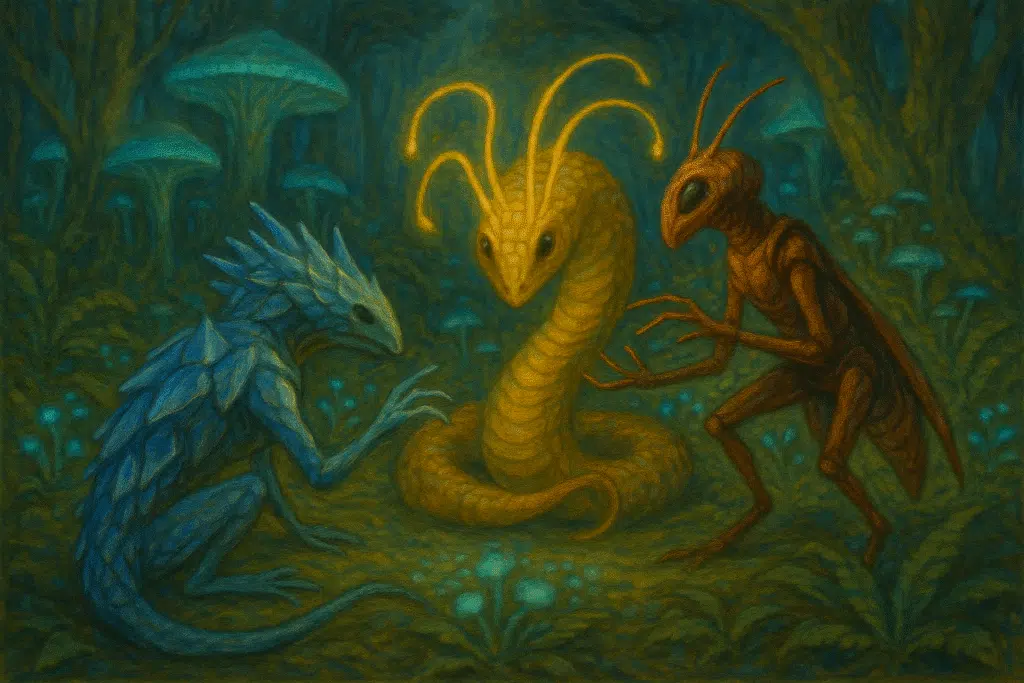
Reimagining Sentient Species
Beyond Elves and Dwarves: Creating Truly Alien Intelligence
Fantasy’s treatment of non-human intelligence often amounts to “humans with slight variations”—elves are longer-lived humans with pointed ears, dwarves are shorter humans with mining skills, orcs are aggressive humans with tusks. Truly innovative worldbuilding requires deeper consideration of how different physical forms, sensory capacities, and evolutionary histories would shape consciousness and culture.
Consider beings that experience time differently—perhaps a species that perceives time exponentially, with each subjective minute twice as long as the previous one. Their art might explore this subjective experience, their language containing tenses humans cannot comprehend, their architecture designed for beings who experience buildings differently depending on when they enter them. Interactions between such beings and humans would be naturally fraught, not through malice but through fundamentally incompatible temporal experiences.
Hive-minded species offer another avenue for exploration. Rather than the insect-based collectives common in science fiction, imagine a species where consciousness flows between individuals, with memories and knowledge dispersing through community bonds. Such beings might view individual death differently, prioritize communication systems humans find irrelevant, and structure societies around maximizing consciousness exchange rather than individual achievement.
Sensory differences would dramatically shape cognition. A species that primarily perceives the world through electrical fields would develop different abstract concepts, different aesthetic values, and different understandings of proximity and distance than visually-oriented humans. Their magic might manipulate electromagnetic spectrums inaccessible to human perception, their writings might record electrical patterns rather than visual symbols, and their dwellings might prioritize insulation properties over visual appeal.
Biological Foundations for New Fantasy Races
Compelling fantasy species require biological frameworks that inform everything from their architecture to their religious beliefs. Rather than beginning with cultural traits (“forest-dwelling magical beings”), start with evolutionary pressures and physiological adaptations that would create distinctive needs and capabilities.
Consider a species evolved in environments with extreme seasonal changes—perhaps requiring hibernation or estivation during harsh periods. Their societies would develop elaborate protocols around these vulnerable periods, with architecture designed for communal hibernation chambers, economic systems accounting for productivity cycles, and religious practices marking transitions between active and dormant phases. Their understanding of death might differ fundamentally from humans’, perceiving it as a hibernation from which return is impossible.
Reproduction methods dramatically shape social structures. Imagine a species where reproduction requires three biological parents, with each contributing different genetic elements. Their family structures, inheritance systems, and romantic traditions would differ fundamentally from human patterns. Courtship might involve complex triadic negotiations, their myths might feature trinities rather than dualities, and their legal systems would develop distinctive approaches to parental rights and responsibilities.
Metabolic differences offer another foundation. Perhaps a species derives energy from ambient magical fields rather than food, evolving in regions with high magical saturation. They might perceive magical energies as humans perceive flavors, develop settlement patterns following magical currents, and create technologies to store or amplify these energies during migrations. Their conflicts with humans might center not on territory but on practices that deplete or pollute their energy sources.
Cultural Development of Non-Humanoid Societies
Physical form fundamentally shapes cultural development. Innovative fantasy must consider how non-humanoid bodies would influence art, architecture, technology, and social organization. These considerations move beyond cosmetic differences to explore how physical reality shapes cultural expression.
Vertical-oriented species—perhaps resembling sentient serpents capable of climbing—would develop distinctive architectural styles prioritizing vertical space and connectiveness between levels. Their written language might flow vertically rather than horizontally, their music emphasize rising and falling tones, and their religious imagery incorporate vertical symbolism. Social hierarchies might literally manifest in dwelling elevation, with status determined by how high one lives within communal structures.
Aquatic or amphibious species would develop technologies focused on problems humans rarely consider: water pressure management, communication through liquid mediums, or methods of recording information that remain legible when wet. Their art forms might utilize water currents, their timekeeping systems reference tidal patterns, and their territorial concepts incorporate three-dimensional boundaries unlike human land borders. Their magical practices might manipulate states of matter rather than elements, mastering transitions between liquid, solid, and gas.
Species with radically different lifespans would develop distinctive cultural approaches. Beings living only a few years might create inheritance systems where knowledge transfers through communal education rather than parent-child relationships, while extremely long-lived species might approach art as millennia-long projects, with individuals contributing small elements to works designed to evolve over centuries. Political systems would reflect these temporal perspectives, with short-lived species developing rapid consensus mechanisms and long-lived ones creating elaborate multi-generational governance structures.
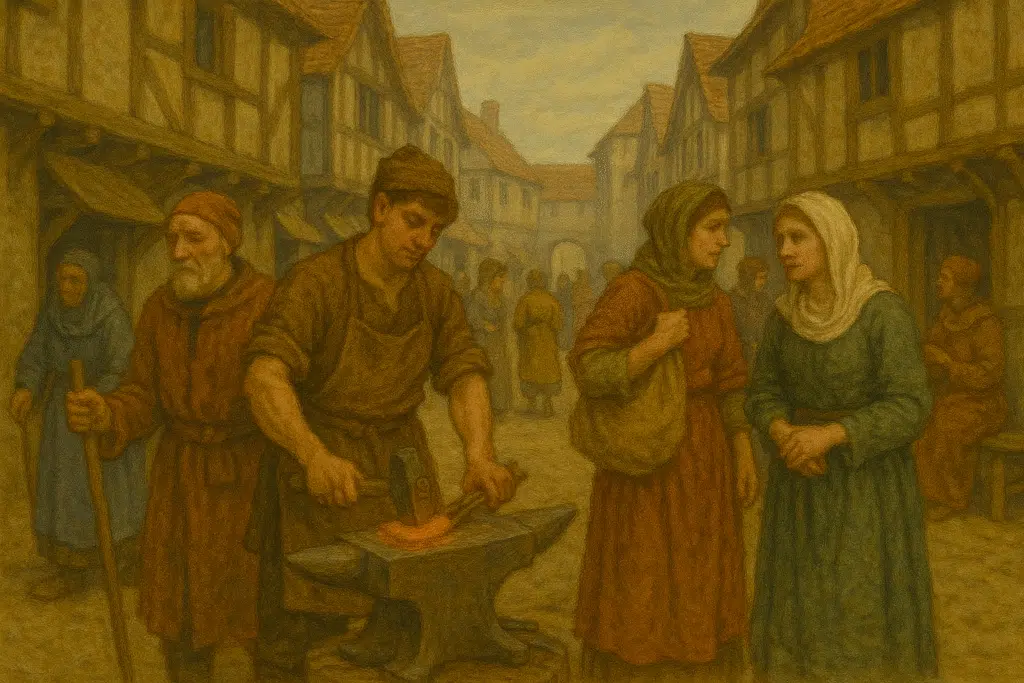
Sensory Worldbuilding Techniques
Crafting Distinctive Scent Landscapes
Fantasy worldbuilding frequently neglects olfactory experiences despite their profound emotional impact and memory-triggering potential. Distinctive scent landscapes create immersive worlds that readers experience on a primal level, bypassing intellectual engagement to create visceral reactions.
Consider how different magical practices might produce signature scents—perhaps conjuration magic carries metallic undertones like ozone after lightning, while illusion spells emit subtle sweet notes that sensitive individuals recognize as artificial. These olfactory markers would create natural authentication systems, with trained “scent-wardens” identifying magical forgeries through smell rather than visual inspection.
Cities in fantasy worlds would have distinctive scent profiles shaped by their magical and cultural practices. Perhaps a city known for fire magic carries perpetual notes of woodsmoke and heated stone, while a trading hub specializing in botanical enchantments features layered herbal aromas that change with the trading seasons. These signatures would create immediate sensory recognition for travelers—the first indication they’ve crossed into new territories coming through scent rather than sight.
Cultural practices would incorporate olfactory elements. Perhaps coming-of-age ceremonies involve receiving a signature scent that identifies family lineage, socioeconomic status, or magical affiliation. Diplomatic meetings might begin with scent exchanges, with subtle variations communicating intentions before negotiations begin. Religious practices could center around sacred smells believed to attract specific deities or spirits, with incense formulations kept as closely guarded secrets.
Tactile Environments That Readers Can Feel
Touch remains fantasy’s most neglected sense, yet tactile descriptions create powerful immersion. Innovative worldbuilding considers how different magical environments would feel against the skin, creating textural landscapes as distinctive as visual ones.
Consider magical materials with unique tactile properties—perhaps enchanted stone that feels perpetually warm regardless of ambient temperature, metals that subtly shift their texture when touched by different individuals, or fabrics that adjust their weave in response to the wearer’s emotional state. These elements create distinctive settings where characters constantly receive tactile information from their surroundings.
Magical effects might manifest through touch before becoming visible. Perhaps approaching magical boundaries creates distinctive skin sensations—a subtle pressure against the face, a feeling of increased gravity, or microscopic vibrations felt in the fingertips. Practitioners might identify magical signatures through touch, developing tactile literacy that complements visual or auditory magical awareness.
Architecture across different magical cultures would prioritize different tactile experiences. A city built by practitioners of water magic might feature buildings with surfaces that maintain perfect moisture balance—never feeling too dry or too damp against the skin. Earth magic traditions might create structures where walls subtly yield to pressure before returning to shape, creating buildings that literally respond to their inhabitants through touch.
Sound Architecture in Alien Worlds
Auditory worldbuilding creates distinctive environments through sound design. Beyond simple background noise, innovative fantasy considers how different magical phenomena, architectural choices, and cultural practices would shape soundscapes across different regions.
Consider magical technologies that utilize sound as their primary medium—perhaps communication systems that encode messages in melodic patterns, security systems that maintain specific harmonic fields that distort when breached, or divination practices that interpret subtle acoustic variations imperceptible to untrained ears. These systems would create societies where auditory literacy becomes as important as visual literacy.
Architecture would develop in response to magical acoustics. Perhaps certain materials amplify magical energies when they resonate at specific frequencies, leading to building designs that function as enormous magical instruments. Religious structures might be constructed around precise acoustic properties that facilitate communion with deities or spirits, creating spaces where sound behaves according to supernatural rather than natural laws.
Cultural development would reflect these auditory foundations. Music might serve functional rather than merely aesthetic purposes—perhaps certain melodic progressions strengthen defensive wards, specific rhythmic patterns accelerate plant growth, or particular harmonic relationships facilitate mental communication between practitioners. The line between musician and mage would blur, creating distinctive social roles unlike traditional fantasy archetypes.
Environmental Determinism in Fantasy Cultures
How Extreme Geography Shapes Civilization
Fantasy often places diverse cultures in proximity without considering how geographical extremes would fundamentally shape societal development. Truly innovative worldbuilding examines how adaptation to unusual environments would create distinctive magical practices, social structures, and technological trajectories.
Consider civilizations developing in perpetual darkness—perhaps in vast cavern systems or regions permanently shadowed by magical phenomena. Their perception systems would evolve differently, possibly developing echo-location, thermal sensing, or magical sight that perceives energy rather than light. Architecture would prioritize tactile navigation features rather than visual aesthetics. Religious systems might develop around the rare experience of light, or alternatively, venerate darkness as the natural state of existence.
Regions with extreme vertical geography—perhaps magically elevated plateaus or bottomless chasms—would develop transportation systems unlike anything in horizontal-dominant societies. Social stratification might literally manifest in elevation, with power structures determined by who controls different vertical levels. Military strategies would evolve around vertical defense rather than perimeter security, while trade networks would require specialized solutions for moving goods through dramatic elevation changes.
Magical environments create even more distinctive adaptations. Imagine societies developing in regions saturated with transmutation energy, where matter randomly shifts between states. Architecture would require constant maintenance and incorporate deliberate instability to accommodate these changes. Governance systems might include “form ministers” responsible for tracking and managing transmutations affecting public infrastructure. Culinary traditions would develop around foods in transitional states, creating dishes impossible in stable environments.
Resource Scarcity as a Cultural Catalyst
How societies manage limited resources fundamentally shapes their development. Fantasy worldbuilding gains depth by considering how unique magical resources—and their distribution—would create distinctive cultural practices and social structures.
Consider societies where magical potential is the primary scarce resource—perhaps magical energy can only be harvested during specific astronomical alignments, creating intense competition for prime harvesting locations. Storage technologies would become crucial, with elaborate systems for preserving magical energy between harvesting periods. Political power would concentrate around control of these storage facilities rather than territorial boundaries.
Water scarcity in magical contexts creates distinctive adaptations. Perhaps water naturally absorbs magical energy, making it both a physical necessity and magical battery. Societies in arid regions would develop intricate water management systems that serve both practical and mystical functions. Water-bonded magical practitioners might gain political power as both literal and figurative lifelines for their communities, while water-sharing ceremonies would carry both practical and spiritual significance.
Time itself might become the scarce resource in certain magical contexts. Perhaps certain spells can only be cast during specific temporal conditions—rare alignments, eclipses, or moments when reality thins. Communities would organize around these temporal resources, developing elaborate predictive calendars and competing for access to locations where these conditions manifest most powerfully. Social stratification might develop around who receives priority during these limited magical windows.
Adaptation of Architecture to Magical Conditions
Architecture in fantasy worlds should reflect adaptation to magical conditions rather than simply mimicking historical human designs with decorative elements. Innovative worldbuilding considers how construction would evolve in response to unique supernatural constraints and opportunities.
Consider regions where gravity fluctuates according to lunar phases. Buildings would require adaptable foundations capable of anchoring structures during low-gravity periods while withstanding increased pressure during high-gravity phases. Interiors would feature adjustable furniture and multipurpose spaces designed to function regardless of gravitational orientation. Cities might develop density patterns tied to gravitational stability rather than conventional urban planning principles.
Areas with magical weather create distinctive architectural responses. In regions where emotion-responsive storm systems develop based on collective feeling, buildings might incorporate materials that dampen emotional emanations, effectively serving as meteorological insulation. Public spaces could feature design elements that promote emotional regulation, functioning as weather control through psychological management.
Magically active materials would transform construction practices. Perhaps certain stones naturally repel specific magical energies while amplifying others, creating architectural zoning based on magical functionality rather than conventional urban planning. Buildings might incorporate deliberately varied materials to create specific magical microclimates within different chambers. Construction sequencing could become crucial, with structures requiring specific building orders to properly channel or contain magical energies.
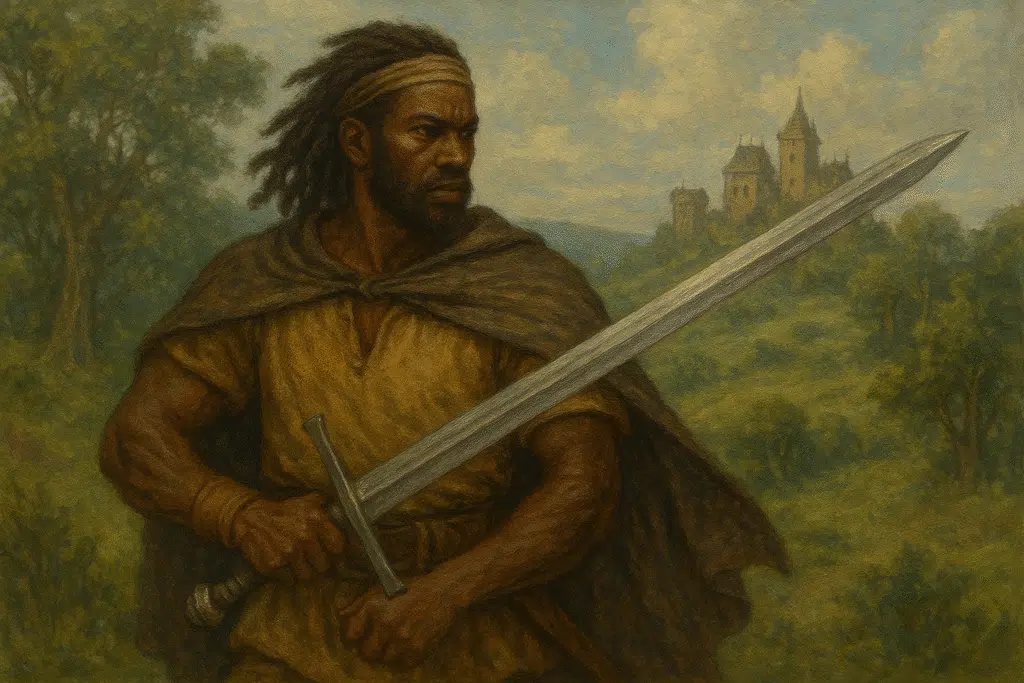
Characters as Products of Their Worlds
Cultural Blindspots and Perspective Limitations
Convincing characters aren’t merely placed in fantasy worlds—they’re shaped by them, carrying cultural assumptions that limit their perspectives in specific ways. These blindspots create authentic characterization while generating natural narrative tension when characters encounter different worldviews.
Consider characters from societies where magic manifests through communal action rather than individual talent. They might fundamentally misunderstand individualistic magical traditions, viewing solitary practitioners with suspicion or pity rather than admiration. Their approach to problem-solving would prioritize gathering appropriate groups rather than finding the right individual, creating distinctive social responses to challenges.
Temporal perception creates profound differences in outlook. Characters from cultures where divination reliably reveals future events would develop fundamentally different relationships with time than those from societies where the future remains unknown. Risk assessment, resource allocation, and emotional investment would all reflect these different temporal perspectives, creating natural conflicts when these worldviews collide.
Moral frameworks embedded in magical systems create especially interesting blindspots. If characters come from traditions where magical energy has inherent moral qualities—perhaps certain types of magic are intrinsically corrupting or purifying—they would approach neutral-magic practitioners with deep misunderstanding. Their inability to separate magical techniques from moral implications would create natural philosophical conflicts that extend beyond simple cultural differences.
How Magic Accessibility Creates Social Hierarchies
The distribution of magical ability fundamentally shapes social structures. Rather than simply declaring magic “rare” or “common,” innovative worldbuilding considers the specific patterns of magical accessibility and their implications for character development and social dynamics.
Consider societies where magical talent emerges unpredictably across all demographics, but training requires substantial resources. Characters from privileged backgrounds might take their magical education for granted, while those from marginalized communities might develop innovative but unrefined techniques through necessity. The tension between formal and informal magical traditions would create natural class dynamics, with self-taught practitioners facing discrimination despite potentially greater raw talent.
Age-dependent magic creates distinctive generational dynamics. Perhaps magical ability manifests during adolescence and fades with age, creating societies where youth hold mystical power while elders control political systems through experience. Characters would develop in environments where authority and power operate on separate tracks, with complex apprenticeship systems bridging these divides and intergenerational tensions shaping political landscapes.
Geographically restricted magic generates particularly interesting character perspectives. If magical ability functions only in certain regions—perhaps near ley lines, specific mineral deposits, or astronomical alignment points—characters would develop fundamentally different relationships with location and mobility. Those born in magic-rich areas might develop entitled attitudes toward their abilities, while characters from magic-poor regions might view magical practitioners with resentment or develop compensatory technological adaptations.
Inherited Beliefs vs. Personal Discovery in Magical Realms
The tension between cultural inheritance and personal experience shapes character development in distinctive ways across different magical systems. How characters reconcile what they’ve been taught about magic with their direct experience creates authentic growth arcs rooted in worldbuilding rather than generic character templates.
Consider characters raised in traditions where magical theory has remained unchanged for centuries, who discover phenomena contradicting these established frameworks. Their internal conflict between respecting ancestral wisdom and trusting personal observation creates natural character development tied directly to the world’s magical physics. Different personality types would resolve this tension differently—some doubling down on tradition, others secretly exploring alternative theories, others openly challenging established dogma.
Magical coming-of-age experiences create formative character moments. Perhaps certain magical traditions require dangerous initiation rituals that permanently change practitioners—physically, psychologically, or spiritually. Characters would carry these experiences throughout their development, their approaches to risk, authority, and identity shaped by how they navigated these transitions and what they sacrificed to gain their abilities.
Magical belief systems create particularly complex inheritance questions. If characters come from traditions where specific magical effects require absolute faith in their efficacy, doubt becomes a practical rather than merely philosophical problem. Characters might maintain outward adherence to traditional forms while privately questioning their foundations, creating layered personalities where public and private magical identities diverge. Alternatively, crisis moments might force characters to confront whether their inability to perform certain magic stems from technical failure or eroding belief.
Technological Development Without Industrialization
Alternative Paths of Progress in Magical Societies
Fantasy worlds needn’t choose between medieval stagnation and industrial replication. Innovative worldbuilding explores how societies with access to magic might develop distinctive technological paths addressing universal human needs without following Earth’s specific developmental trajectory.
Consider magical automation developing in agricultural contexts rather than industrial ones. Perhaps enchanted tools that self-maintain and adapt to changing conditions become agricultural staples, creating societies with highly efficient food production but without factory systems. Social structures might evolve around seasonal re-enchantment ceremonies where communities gather to maintain these systems, creating technological traditions that strengthen social bonds rather than disrupting them.
Medical technology might advance through magical symbiosis rather than mechanical intervention. Instead of developing surgical techniques, societies might cultivate beneficial relationships with healing entities—perhaps carefully bred magical creatures, fungi with regenerative properties, or spirits that temporarily inhabit bodies to effect repairs. Healthcare systems would resemble diplomatic networks managing these relationships rather than technical hierarchies mastering specific procedures.
Construction technology could evolve through manipulation of material properties rather than assembly techniques. Rather than building increasingly complex structures from standardized parts, practitioners might develop methods for growing buildings by magically accelerating natural processes or temporarily altering material states. Architecture would reflect organic development patterns rather than mathematical precision, creating distinctive visual landscapes while solving universal shelter needs.
Communication Networks Beyond Modern Parallels
Communication technology represents a particular opportunity for distinctive magical development. Rather than simply recreating telegraph or telephone equivalents with magical energy, innovative worldbuilding considers fundamentally different approaches to connecting distant locations.
Consider empathic networks where specially trained practitioners serve as emotional conduits between communities. Rather than transmitting specific messages, these networks would maintain general awareness of conditions in connected locations—sensing distress, celebration, or tension without specific details. Diplomatic systems would develop around interpreting and responding to these emotional signals, creating distinctive international relations based on empathic rather than intellectual exchange.
Object sympathies offer another communication framework. Perhaps items sharing origins—wood from the same tree, metal from the same ore vein, clay from the same riverbed—maintain magical connections regardless of distance. Societies would develop elaborate systems for creating and distributing sympathetically linked objects, with communication hubs managing thousands of connected items organized by location, importance, and reliability. Message priority would depend on which objects were activated, creating natural security classification systems.
Dream-based communication creates particularly interesting social dynamics. If trained practitioners could enter shared dreamscapes during sleep, societies would develop around synchronizing sleep schedules across time zones, creating distinctive daily rhythms where certain hours are reserved for interregional communion. International relations would operate on two tracks—waking diplomacy focused on practical matters, dream diplomacy addressing deeper cultural and philosophical concerns that emerge in shared unconscious spaces.
Magical Solutions to Universal Human Challenges
Every society faces certain fundamental challenges—preserving food, maintaining health, securing shelter, transporting goods. Magical systems create opportunities for addressing these needs through paths dramatically different from Earth’s technological development.
Consider food preservation through temporal manipulation rather than chemical or temperature control. Perhaps specialized practitioners can create fields where time passes differently, allowing food to remain in stasis until needed. Communities would develop around these temporal anchors, with preservation specialists holding crucial social positions and architectural designs incorporating temporal preservation chambers at their centers.
Transportation systems might develop through spatial folding rather than vehicle improvement. Instead of building faster ships or carriages, societies might invest in creating permanent connections between fixed points—perhaps doorways that connect distant locations when activated with specific keys or passcodes. Trade networks would develop around these connection points rather than traditional routes, with cities gaining importance based on how many connections they maintain rather than their geographic position.
Security systems illustrate particularly distinctive magical development paths. Rather than developing increasingly sophisticated locks and barriers, societies might cultivate guardian entities bound to specific locations, create consequence curses that activate when boundaries are violated, or implement intention-detection fields that respond differently to visitors based on their purposes. Legal systems would evolve around these protections, creating distinctive approaches to concepts like property, privacy, and trespass.
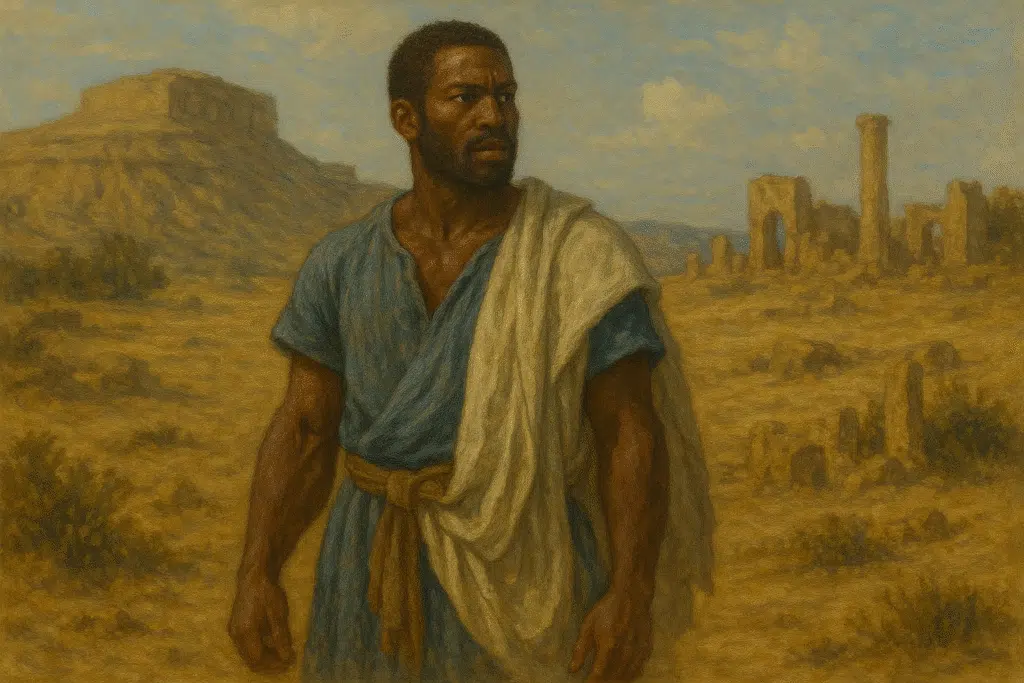
The Politics of Alternative Power Sources
Who Controls Magic and Why It Matters
Political systems in fantasy worlds should reflect the specific characteristics of their magical systems rather than simply transplanting historical Earth models. The question of who controls magical resources—and how this control is maintained—creates distinctive political landscapes that drive conflict and cooperation.
Consider societies where magical ability is hereditary but requires environmental activation—perhaps exposure to specific conditions during childhood development. Ruling classes would carefully control these activating environments, creating elaborate systems ensuring their offspring receive necessary exposure while preventing access for other social groups. Revolutionary movements would target these activation sites rather than political institutions themselves, recognizing that power transition requires generational access to these crucial resources.
Magical knowledge distribution creates different political dynamics. If practical magic requires academic understanding of complex principles, societies might develop around educational gatekeeping rather than innate talent restrictions. Political structures would entwine with academic institutions, creating governance systems where advancement requires mastering increasingly esoteric magical theory. Social mobility would depend on access to educational resources rather than bloodline or wealth.
Resource-dependent magic creates particularly interesting political landscapes. If magical practice requires specific materials—perhaps minerals with supernatural properties or botanical components from particular ecosystems—political control would develop around supply chain management rather than territory itself. Colonial relationships would emerge based on extraction rights rather than direct governance, creating distinctive international dynamics where formal independence might mask profound resource dependence.
Religious Institutions in Non-European Contexts
Fantasy religions often replicate European church structures regardless of their fictional origins. Innovative worldbuilding considers how different magical realities and cultural foundations would generate religious institutions with distinctive organizational principles, political relationships, and social functions.
Consider religious systems where divine power manifests through collective rather than hierarchical structures. Rather than concentrating authority in individual leaders, these traditions might distribute religious responsibilities across community networks, with different households maintaining specific aspects of practice that function properly only when performed in concert. Political engagement would occur through consensus-building across these networks rather than through centralized religious authorities.
Magical verification of religious claims creates particularly interesting institutional developments. If deities demonstrably respond to specific ritual actions—perhaps manifesting visible signs, bestowing consistent blessings, or punishing improper practice—religious institutions would develop around maintaining ritual precision rather than theological interpretation. Training would emphasize perfect performance over philosophical understanding, creating priesthoods that resemble technical specialists rather than spiritual guides.
Animistic or ancestor-focused traditions offer alternatives to hierarchical religious structures. Systems where every household maintains direct relationships with family spirits or local entities would develop distinctive political engagement patterns, with religious authority emerging from demonstrated relationship quality rather than institutional position. Governance might incorporate formal roles for non-human entities speaking through chosen vessels, creating political systems where authority flows through relationships across species boundaries.
Trade Networks Built on Supernatural Resources
Economic systems in magical worlds would develop around resources and services unlike anything in historical Earth trade. Innovative worldbuilding considers how supernatural materials, abilities, and phenomena would create distinctive economic networks with their own power dynamics and conflicts.
Consider trade systems built around emotional resources—perhaps certain regions naturally produce emotional energies that can be harvested, preserved, and transported for magical use elsewhere. Economic specialization would develop around emotional production, with communities cultivating specific collective feelings through cultural practices, architectural design, and social rituals. International relations would balance emotional sovereignty against market demands, creating distinctive diplomatic challenges.
Temporal resources create particularly interesting trade networks. If certain regions experience time differently—perhaps seasonal changes occur at different rates, specific temporal qualities concentrate in certain locations, or historical moments can be accessed through particular sites—economic systems would develop around temporal arbitrage. Traders might age differently depending on their routes, creating distinctive social status for those who regularly traverse temporal boundaries.
Magical waste management creates economic opportunities often overlooked in fantasy worldbuilding. If magical practice generates byproducts with both hazardous and valuable properties, specialized collection and processing systems would develop, creating economic niches for those willing to handle dangerous materials. International tensions would emerge around disposal sites and processing responsibilities, with wealthy magical centers potentially exploiting marginalized regions as magical waste repositories.
Crafting Language That Reflects Worldview
Naming Conventions That Reveal Cultural Values
Names in fantasy worlds should reflect deeper cultural values rather than simply sounding exotic. Innovative worldbuilding develops naming conventions that reveal how societies organize knowledge, prioritize relationships, and understand individual identity in relation to community.
Consider naming systems that incorporate chronological markers—perhaps individuals receive additional name elements after significant life events, magical achievements, or community contributions. These accumulating names would create immediate social signifiers, allowing others to recognize someone’s experiences without explanation. Older individuals might carry elaborate names recording their life histories, while those with shorter names would be immediately recognized as lacking certain experiences.
Magical affinity might determine naming structures in societies where supernatural talents emerge early in life. Perhaps primary names indicate one’s dominant magical alignment, while secondary elements reflect specific applications or specializations developed through training. These systems would create immediate magical communication through introduction—practitioners immediately understanding each other’s capabilities through their name elements and recognizing potential collaboration opportunities.
Relationship-based naming creates particularly interesting social dynamics. Instead of fixed personal identifiers, individuals might be known differently depending on who’s addressing them—names reflecting their position within specific relationship networks rather than individual identity. These systems would prioritize context over individuality, creating societies where appropriate address requires understanding someone’s position within multiple overlapping social systems.
Idioms and Metaphors From Alternate Realities
Language reflects lived experience, and fantasy cultures would develop distinctive expressions reflecting their magical and environmental realities. Rather than simply substituting fantasy elements into familiar phrases (“by the dragon’s teeth” instead of “by God’s teeth”), innovative worldbuilding creates expressions that reveal how people conceptualize their unique worlds.
Consider weather-based expressions in worlds where emotional states manifest as meteorological phenomena. Rather than describing someone as “angry,” locals might reference specific storm types associated with rage—”He’s brewing northerlies today” or “Watch for lightning around her.” These expressions would reveal sophisticated emotional taxonomies beyond simple categories, demonstrating how magical effects create nuanced understanding of internal states through external manifestations.
Magical crafting would generate distinctive process metaphors. Rather than describing difficult situations as “uphill battles,” cultures familiar with enchantment might reference challenging magical procedures—”It’s like binding quicksilver” or “We’re casting through interference.” These expressions would incorporate specialized knowledge into everyday speech, revealing how technical magical concepts inform general understanding of challenge, effort, and precision.
Temporal experiences unique to fantasy settings would generate particularly interesting expressions. In worlds where certain locations experience time differently, people might reference these phenomena in everyday speech—”She’ll wait a Thornwood minute” indicating extreme patience, or “finishing in shadow-time” suggesting something accomplished with impossible speed. These phrases would reveal how unusual temporal experiences shape cultural understanding of duration, patience, and opportunity.
When Magical Concepts Have No English Equivalent
The most distinctive fantasy languages incorporate concepts that resist translation because they reference experiences unique to their magical realities. These untranslatable terms reveal how different metaphysical systems create fundamentally different ways of understanding existence.
Consider terminologies developing around magical senses absent in our world. If practitioners could directly perceive magical energies, they would develop sophisticated vocabularies describing these perceptions—perhaps dozens of terms distinguishing different energy qualities, interaction patterns, or potential applications. These vocabularies would function like wine-tasting terminology, allowing practitioners to communicate subtle differences imperceptible to non-specialists.
Magical states of being would generate particularly complex terminologies. Perhaps certain magical practices create consciousness states entirely foreign to non-magical experience—awareness distributed across multiple locations, perception of multiple timelines simultaneously, or direct communion with non-human intelligences. Languages would develop terminology not just naming these states but describing their qualities,


